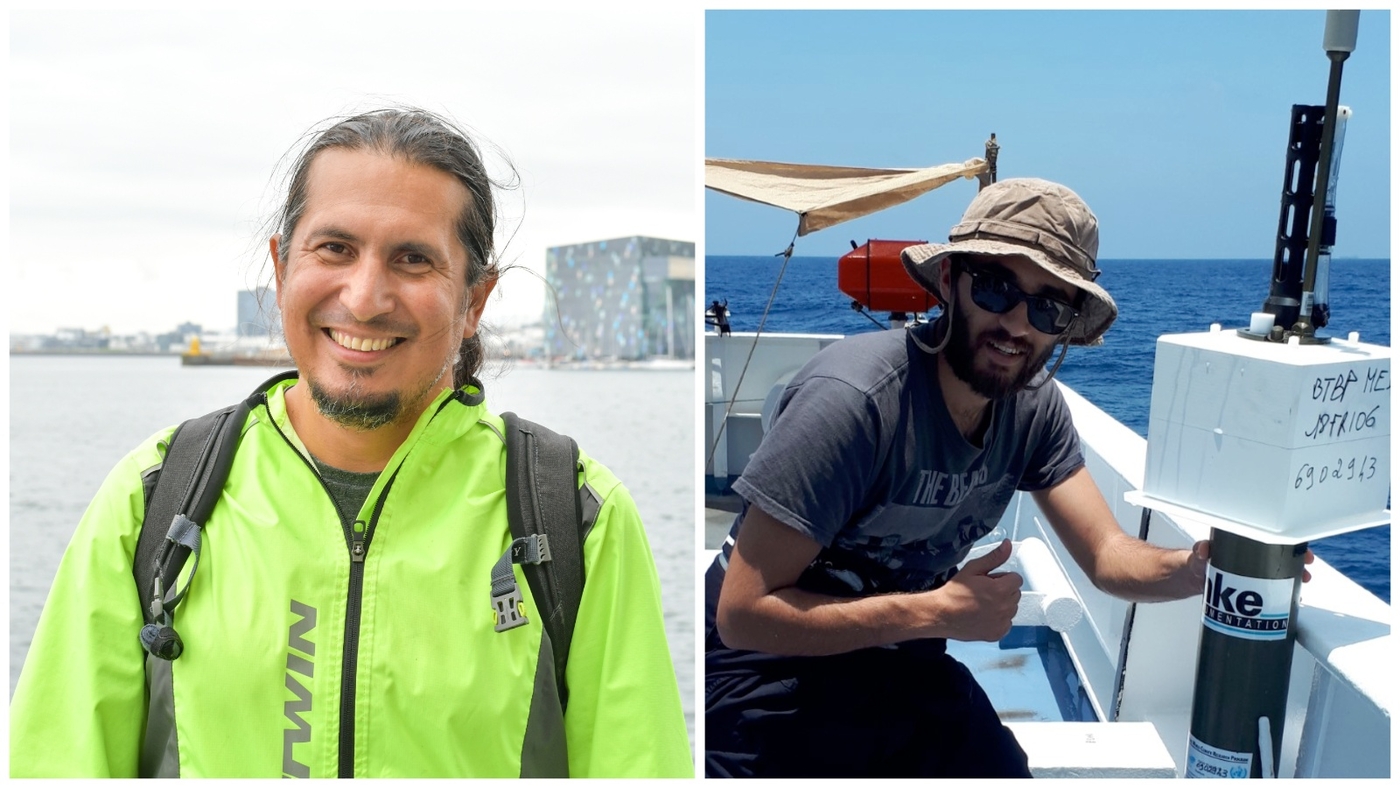Oceanographers from ROCS and the University of Iceland publish for the first time their groundbreaking findings on the structure and pathways of a bottom boundary current flowing south of Iceland.
Research scientists with Queen Margrethe's and Vigdís Finnbogadóttir's Research Centre on Ocean, Climate and Society (ROCS) at the University of Iceland have analysed the complex structure and pathways of a bottom boundary current flowing south of Iceland contributing to the southward return flow of the North Atlantic Deep Water. The research is conducted in collaboration with the French Naval Hydrographic and Oceanographic Service.
The research findings are an important contribution to knowledge in the field of oceanography and global climate, and may also shed light on the distribution of benthic species along the Icelandic shelf It is crucial to better research the currents in these parts. These currents are not only significant from an economic perspective, as various harvestable stocks cultivate in part along the Icelandic shelf but also because changes in currents around the country can have serious global consequences for the climate and biological diversity.
The research findings were published recently in the journal Geophysical Research Letters (GRL) in an article titled "Structure of the Bottom Boundary Current South of Iceland and Spreading of Deep Waters by Submesoscale Processes.'' The main authors are Charly de Marez, a postdoctoral researcher with ROCS at the University of Iceland and Angel Ruiz-Angulo, Associate Professor and ROCS collaborator at the University of Iceland. Matthieu le Corre, engineer at the French Naval Hydrographic and Oceanographic Service (SHOM), is also a co-author.
The study brings to light significant findings on the structure and pathways of a bottom boundary current flowing south of Iceland contributing to the southward return flow of the North Atlantic Deep Water (NADW). This is an important component of the Atlantic Meridional Overturning Circulation (AMOC), a crucial component of the global climate system.
Deep-sea currents divide mixing bottom layers of the ocean
"This study clearly shows that there is a strong current on the seabed flowing along the southern coast of Iceland. This new knowledge tells us that we can still learn a great deal from the ocean. This is especially true of the ocean south of Iceland which is still an under-researched area compared to other areas in the North Atlantic Ocean," says Charly de Marez post-doc at ROCS.
The study will increase knowledge pertaining to understanding heat, nutrients, and carbon transport at depth in this region, according to the authors. For the first time, the authors detail the structure of a steady bottom current carrying dense water masses, travelling along the Iceland-Faroe ridge and the southern part of the Icelandic continental shelf. The paper reveals how the current subsequently divides into smaller structures upon reaching the southernmost tip of Iceland, spreading this dense water into the Iceland Basin while, on its way, significantly mixing the bottom layer of the ocean. This process is possibly responsible for the distribution of benthic species along the Icelandic shelf.
The beginning of very important research
The authors of the article say that the study adds significantly to the understanding of deep-sea currents in the Atlantic Ocean. At the same time, it shows clearly the importance of sustained oceanographic observations in critical regions like the South of Iceland. Given Iceland's proximity to crucial components of the Atlantic Meridional Overturning Circulation (AMOC) and the global consequences of any substantial changes, including climate change and biodiversity, ongoing observations are imperative.
"I want to mention specifically that the phenomenon we describe in the study has significant impact on life in the deep sea. Here, the fate of deep-sea corals and the ocean floor itself can be mentioned, along with heat and carbon transport at great depths. All these factors indicate responses to climate change caused by humans," says Charly.
The study published by Charly, Angel and Matthieu unlocks the complexities of deep-sea currents south of Iceland. The paper is made available in open access by the authors.




